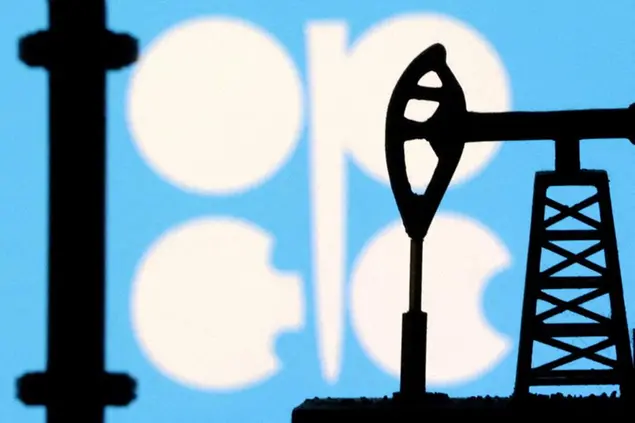PHOTO
Rising global oil inventories through April due to soft fuel demand may strengthen the case for OPEC+ producers to keep supply cuts in place when they meet on June 2, OPEC+ delegates and analysts say.
OPEC+ - the Organization of the Petroleum Exporting Countries (OPEC) and allies led by Russia - meets on Sunday to discuss supply policy and whether to extend voluntary cuts.
OPEC+ sources said earlier this month that producers could maintain the output reductions.
The amount of oil that major consuming countries hold in storage varies with supply and demand and is an industry gauge of market fundamentals, alongside other indicators such as the strength of physical crude markets.
Oil stocks among the wealthy Organisation for Economic Co-operation and Development (OECD) countries stood at 2.79 billion barrels in March, up 20 million barrels on the month and 34 million barrels on the year, despite the OPEC+ cuts, according to preliminary data from OPEC in its May oil market report.
"This is a concern," said an OPEC+ delegate who declined to be identified.
Meanwhile, the International Energy Agency said in its own May report that total global stocks grew in March by 34.6 million barrels from February, citing a sharp rise in the amount of oil on tankers in transit.
Many tankers are making longer voyages in order to avoid the Red Sea, where Yemen's Houthi group have launched a series of attacks on shipping.
The IEA said there are signs inventories rose again in April as crude and fuel was unloaded from the tankers, and as exports from Russia and the Americas declined.
"The physical market is well supplied while demand is slowing down," a second OPEC+ delegate said.
Inventories in non-OECD countries rose in March for the first time since November, the IEA said, although in contrast to OPEC, it reported OECD stocks at their lowest levels in 20 years.
The two forecasters produce their own estimates but tend to revise figures as more data becomes available, bringing them more in line.
Non-OECD crude stocks rose 2 million barrels in March and another 48.5 million barrels in April, the IEA said, citing data from energy data analytics consultancy Kayrros. Most of the build was in China, the IEA said.
"I believe that OPEC+ will be unlikely to release barrels back to the market until there are palpable signs of stock draw," said Tamas Varga of oil broker PVM.
ABOVE FORECAST
Stocks usually build in spring as refineries undergo maintenance ahead of summer demand but steeper-than-expected global inventory rises have weighed on crude prices, along with a relatively warm northern hemisphere winter and concerns about a longer period with higher interest rates.
Global benchmark Brent crude futures traded around $85 a barrel on Wednesday, having fallen from a six-month high of $92.18 in April.
A 2 million barrel-per-day (bpd) build in observable oil inventories in April is at odds with expectations of a 200,000 bpd deficit for the month anticipated by JP Morgan analysts, they said in a May 19 note.
"Even more concerning, observed global stocks have continued to build in the first two weeks of May, against our implied 0.9 million bpd deficit," the bank said, noting China had taken advantage of lower prices to restock.
While the two OPEC+ delegates said the group's data showing a rise in OECD stocks was a concern, one of them noted OPEC's supply and demand balances point to large inventory drawdowns in the second half of the year.
The OECD stocks are also still some 38 million barrels below the five-year average, according to OPEC.
It expects demand for OPEC+ crude to average 43.65 million bpd in the second half, implying a drawdown of 2.63 million bpd if the group maintains output at April's rate of 41.02 million bpd.
JPMorgan also expects fundamentals to improve as the peak gasoline demand U.S. summer driving season gets underway.
(Editing by Dmitry Zhdannikov, Simon Webb and Kirsten Donovan)
